String Magazine
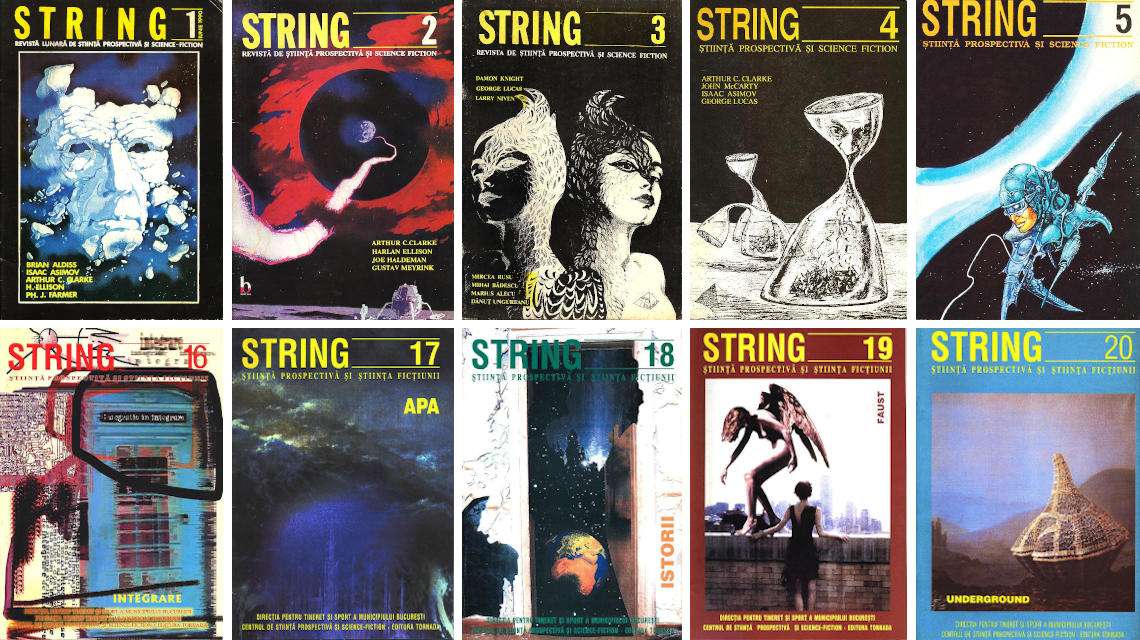
String it was magazine of science and science-fiction edited in Romania.
The first two numbers were edited by Baricada Publishing House, the following Tornada Publishing House in collaboration with Label Man.
Editor -in -chief was the lady Mihaela Muraru-Măndrea.
Collaborators and members of the editorial team were: Liviu Radu, Mihai Bădescu, Romulus Bărbulescu, Ion Cristea, Florin Munteanu, Neculai acorned, Călin Popovici and others.
String magazine, with quarterly occurrence, ceased its activity in 2001.
Magazine String It was launched by Mihaela Muraru-Mândrea in 1990, a few months after the establishment of the "String" Cenacle. The publication benefited from the financial support of one of the newly created private institutions after the fall of the Ceausescu regime, Baricada Publishing House, through its owner, Eduard-Victor Gugui. A brief note that opens the number 5 speaks of "String theory, the one that gave [...] in January 1990 the name of this magazine", which must yet be corrected with the specification that, in the mentioned month, it could be at most a magazine project, since in the vălmăşagul Political Change of the Revolutionary moment it is excluded, and it is excluded, and Sf.
The most likely is the appearance of the first issue in June 1990, as we find recorded elsewhere. In the editorial scheme we find Mihaela Muraru-Măndrea, holding the position of editor-in-chief, together with Mihai Bădescu (deputy editor), Romulus Bărbulescu (literary editor), Florin Munteanu (scientific editor) and a few other souls. The subtitle of the publication is "Prospective Science and Science Fiction magazine", which justifies the massive presence of the articles of popularizing the aspects provided by some border scientific researches, as well as those reserved for artificial intelligence, "non -elucidated cases" (CNI) in osenic, etc.
Thus in number 2, an article entitled Artificial intelligence - where? It is signed by Dan D. Farcaş, and Mihai Bădescu presents a project of "interstellar migration" with vehicles constituted by specially arranged comets, while Eugen Celan Parapsychology yesterday and today. György Mandics discusses the file of the "strange electric bulbs" in the bas -reliefs of the Egyptian temple at Dendera. The SF segment consists of already classic translations of stories, as The nine billion names of the Lord by Arthur C. Clarke, Car by Harlan Ellison and tercentenary By Joe Haldeman, the part reserved for Romanians being based on older text resumptions, such as George Anania and Romulus Bărbulescu entitled The planet of blue umbrellas, taken from CPSF. Among the collaborators of these first numbers we meet Horia Arama, Dorel Dorian, Alexandru Mironov (with articles about Gérard Klein) and Ştefan Ghidoveanu, who treats The beginnings of the scientific-fantastic film.
Before he could have been a well-defined profile, the magazine had to face financial shakes, due to the fact that Baricada Publishing House renounces the project support. The number 3 appears under the aegis of the Tornada publishing house and is funded by the Youth Foundation of the Municipality of Bucharest. For the next three numbers, Tornada Publishing House is associated with Ecce Homo Publishing House, until Ion Cristea's death, the latter director and the new project funder String. The editorial now undergoes transformations, some older names being replaced with Liviu Radu (literary editor), Ion Cristea (scientific editor) and Tudor Popa (responsible for graphics and cover).
Number 5 makes a special campaign pro domo, publishing materials such as String theory and the unification of physics (fragments from A Brief History of Time) de Stephen Hawking, String and cosmic warp by Fritjaf Capra, The theory of strings and the physics of the future by Mihaela Muraru-Mândrea, String and SF possibilities by Liviu Radu.

After a two-year interruption, the publication resumed its number 7 (published in the last quarter of 1997), under the aegis of Tornada Publishing House, but in collaboration with the Prospective and Science-Fiction Science Center and with funds won by the Municipal Directorate for Youth and Sport Bucharest. In addition to the editor-in-chief, unchanged, in the editorial composition we find two literary editors (Liviu Radu and Ana-Maria Negrilă), along with Robert David, who takes over the scientific sector of the magazine.
During the other numbers in String, Until no. 19 (the last of which we know), the editorial will continue to undergo changes: Mihaela Muraru-Mandrea appears as director, the editor-in-chief is Robert David (the incisor editor of this stage), Ana-Maria Negrilă is as a general secretary, Liviu Radu takes the tasks of the editor, literary.
During his evolution, the magazine began to pay more attention to the original creation, publishing materials by Mihail Grămescu, Jean-Morin Sterian, Ovidiu Bufnilă, Andrei Valachi, Florin Pîtea and others, among which the editorial members not least. Correction deficiencies sometimes make hardly legible texts, which at one point by Ona Frantz in a comment on number 9 of String, where a story of Ana-Maria Negrilă (Trickster) gets to reject the readers "for the simple reason that there are more print mistakes than rice grains in a pepper filled with rice." The truly remarkable part of the publication is the initiative and constant of the thematic numbers, starting with the already mentioned number 5, dedicated to string, and followed by others, on topics such as mythology, integration, alternative stories, water, etc.
An award obtained by the magazine in Romcon 1990 aimed to signal his presence in the cultural landscape of self-increasing publications with the promotion of the Romanian SF in his attempts to post-revolutionary renewal. After the cessation, the publication had a rumor of return to life - influential, unfortunately - by trying to relaunch the Center for Prospective Science, Creativity and Fiction "String". Alexandru Mironov, Ion Hobana, George Anania, Florin Munteanu, as founding members of the association, also Liviu Radu and Ana-Maria Negrilă, as traditional editors of the magazine, strived to "surrender string The next generation ”, as a point in the program of December 2010 sounds.
"String"-a prospective science magazine and science fiction. Editor: Baricada Publishing House, Bucharest. Appears in 1990. Editor-in-chief: Mihaela Muraru-Măndrea. Editors: Mihai Bădescu, Romulus Bărbulescu, Florin Munteanu, Călin Popovici. Periodicity: biannual.
No. 1/1990-format: A4, 48 pages, printed and connected, black and white illustrations, color covers.
No. 2/1990-23 × 16 cm format, 32 pages, black and white illustrations, color covers.
No. 3/1991-format 20 × 14 cm, 32 pages, black and white illustrations, black and white covers.
No. 4/1992-format 24 × 16 cm, 32 pages, black and white illustrations, black and white covers.
No. 5/1992-24 × 16 cm format, 32 pages, black and white illustrations, color covers.
Editorials, published in numbers 3 and 5, explain to readers the causes that caused the variations of fomat and number of pages. The aesthetic program is quite unclear: the magazine wants to bring special information, wishing to stimulate Romanian avant -garde thinking (s.n.).
From the contents: articles aimed at border science, ux, paleoastronautics, parapsychology, interviews, film scenarios, photo illustrations, film chronicles, editorial post office.
Interesting is the editorial formula, which gathers in a place specialists from related fields: SF writers and graphic people, scientists, film criticisms. Due to the reduced frequency of the occurrences, the formula of the collaborators of the one of the employed professionals was preferred.
Texts on the activity String magazine taken from the following web pages:
[1] Wikipedia in Romanian - String
[2] The Romanian Society of Science Fiction and Fantasy - SF magazines - Author Mircea Opriţă, material published on September 19, 2011
[3] Nautilus magazine - SF literary press - Author Aurel Cărăşel, material published on July 1, 2012
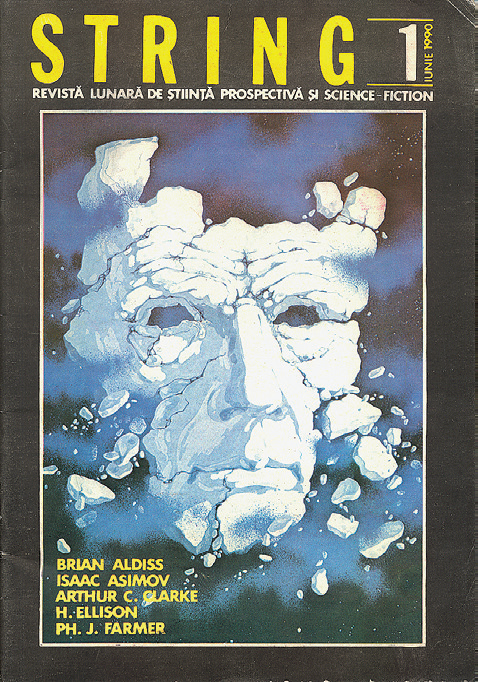
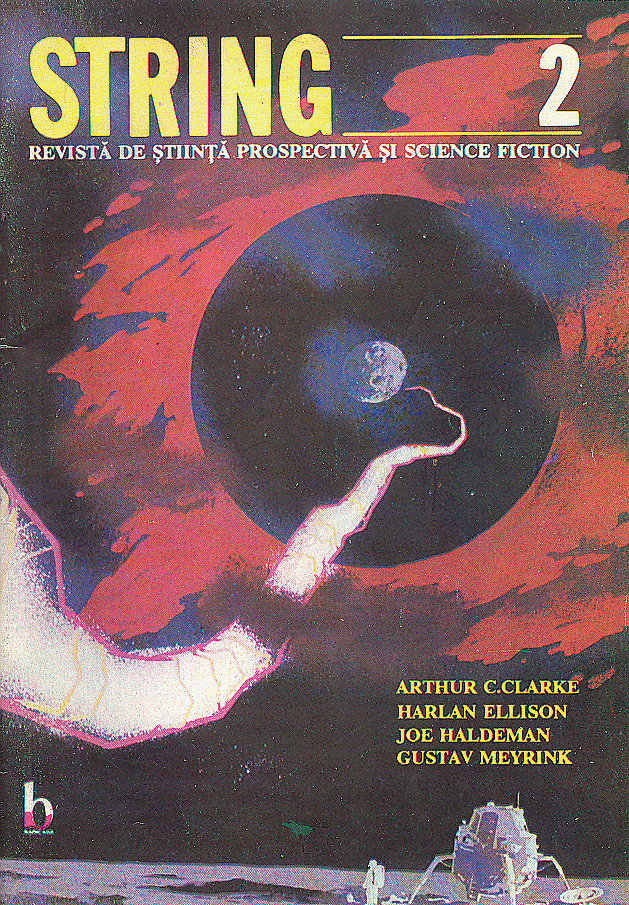
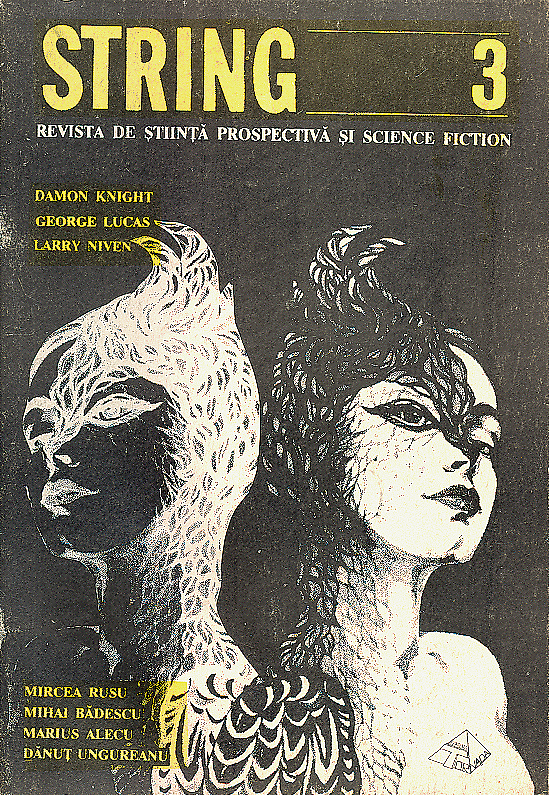
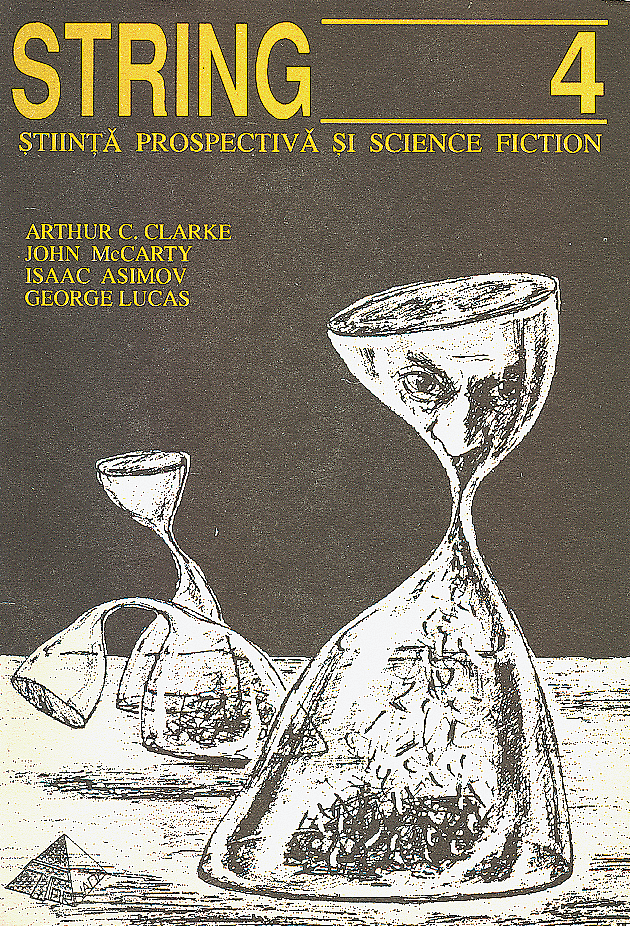
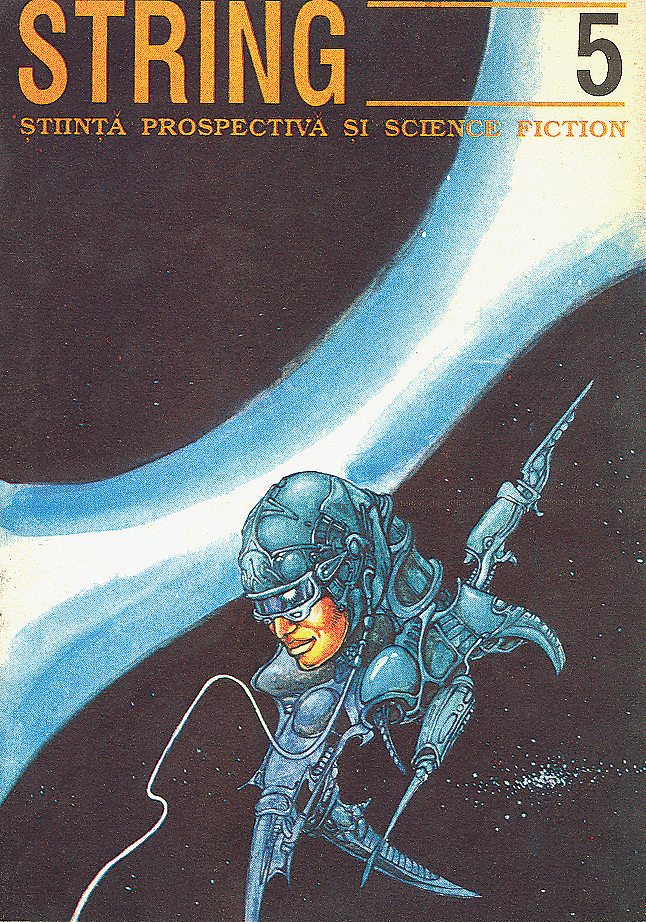
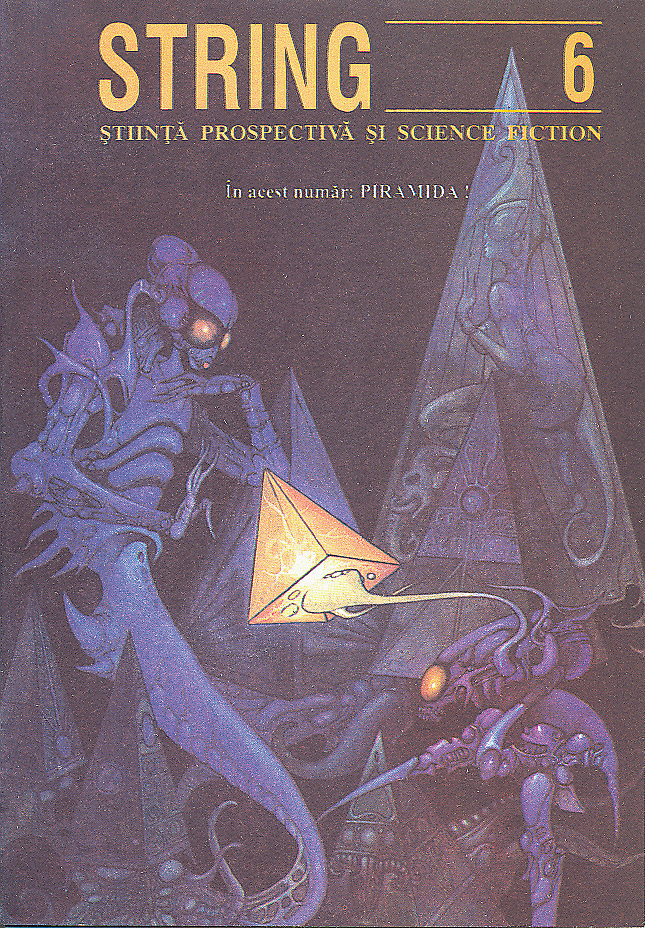
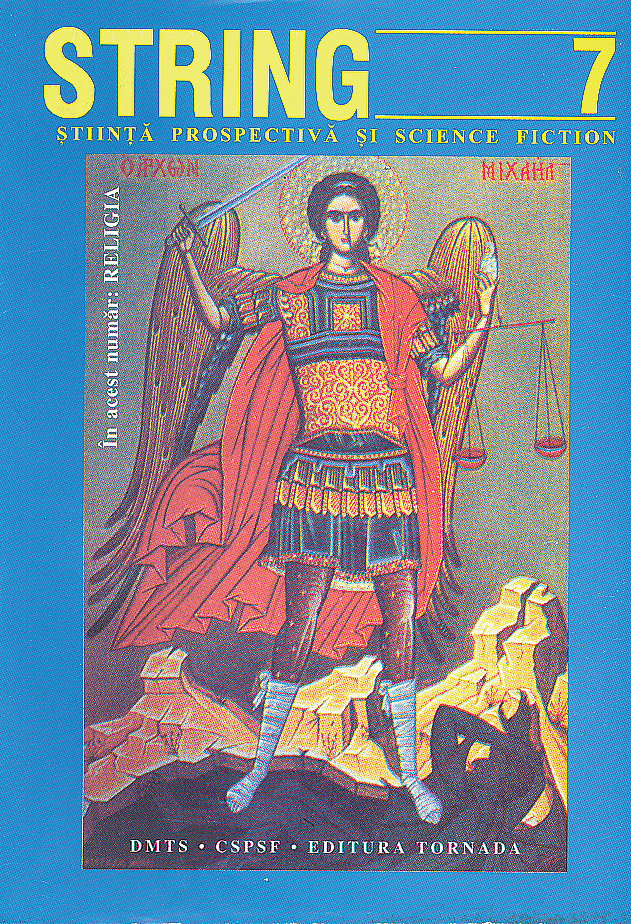
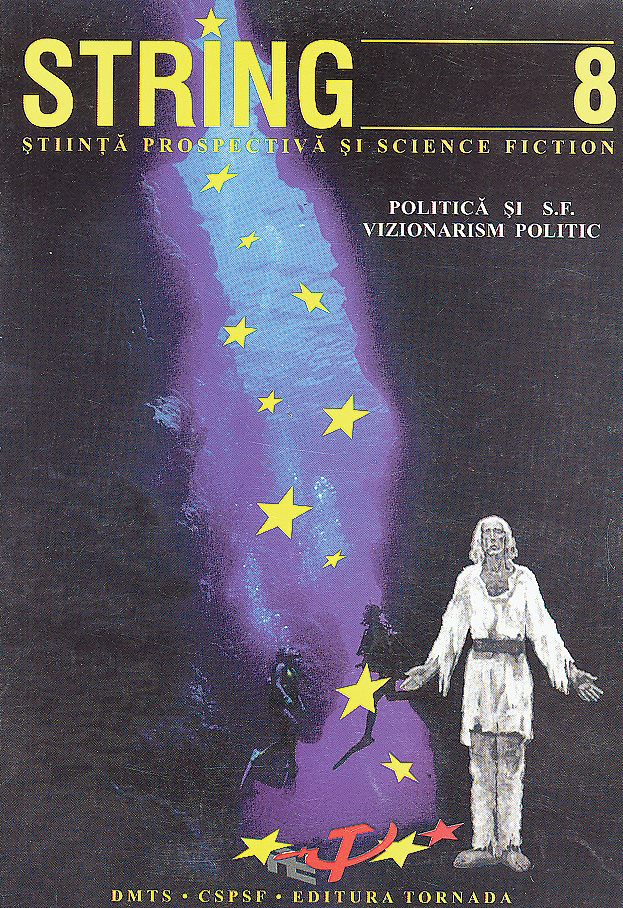
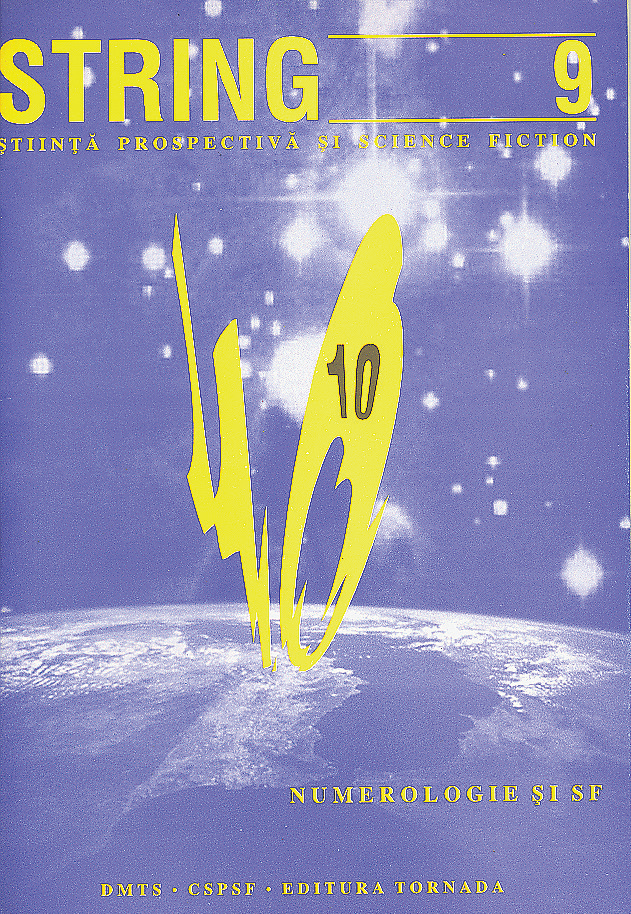
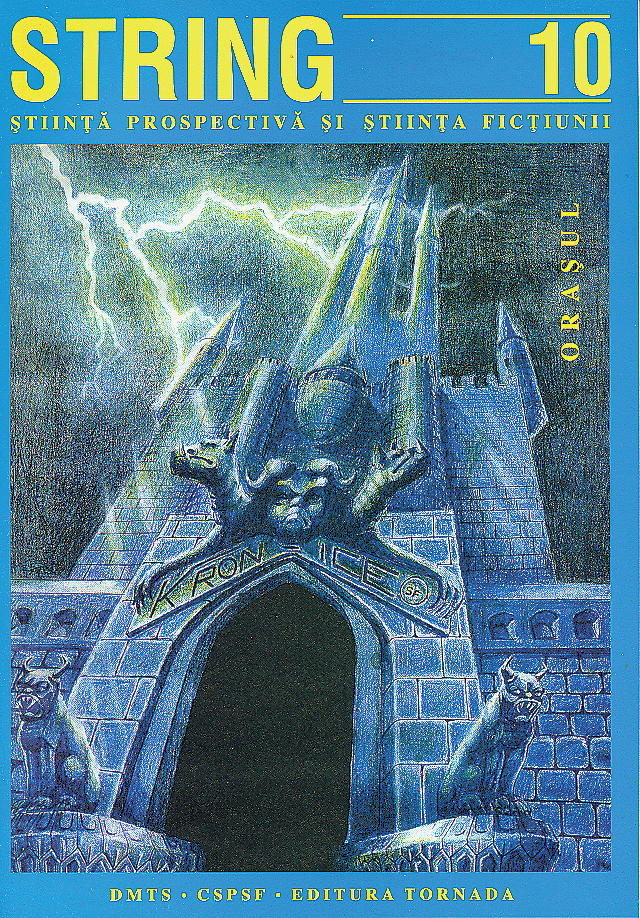
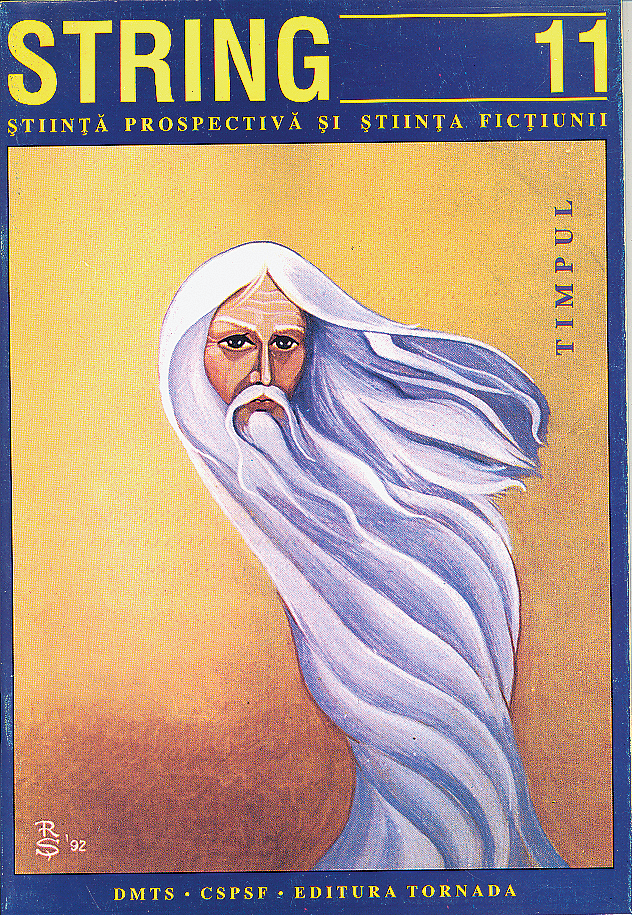
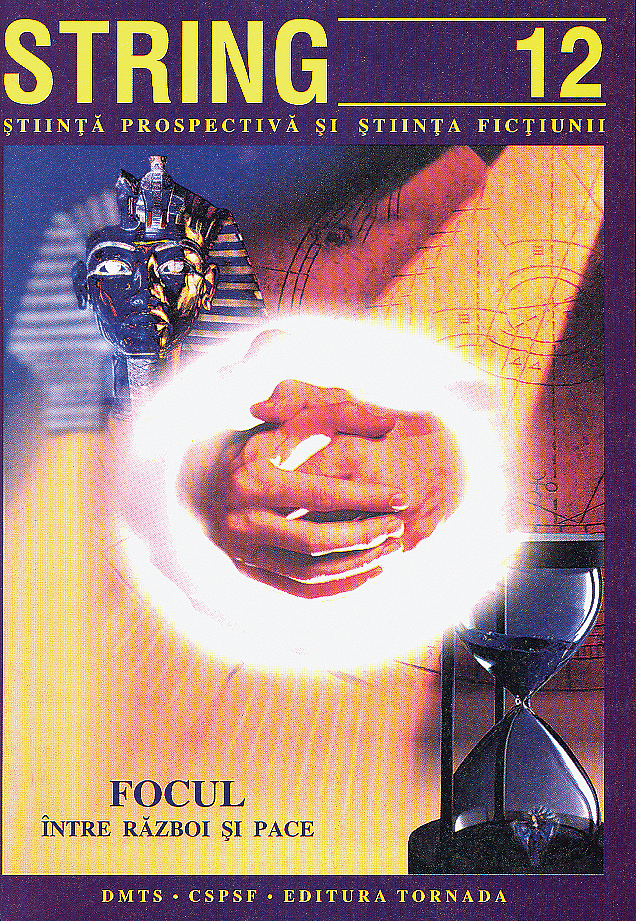
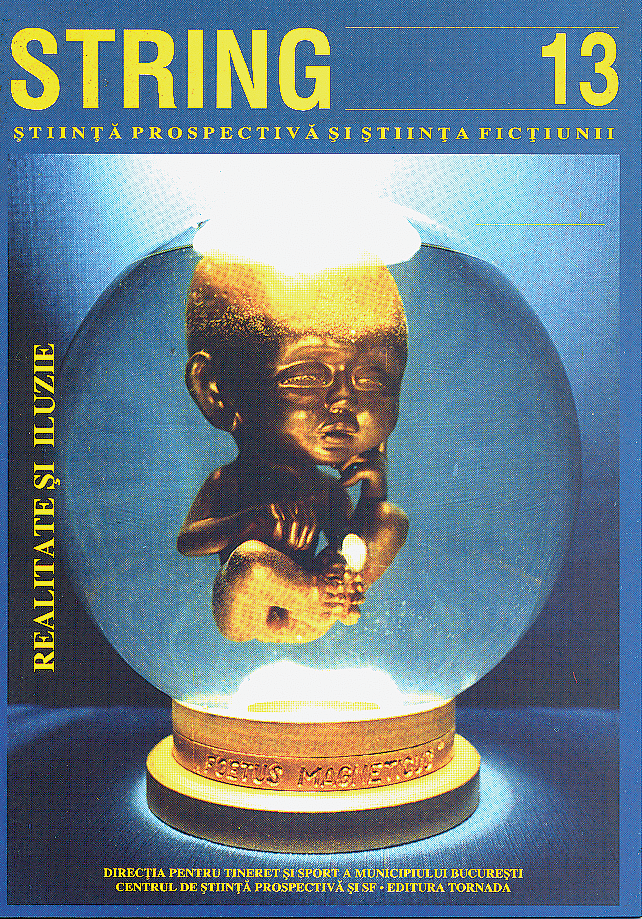

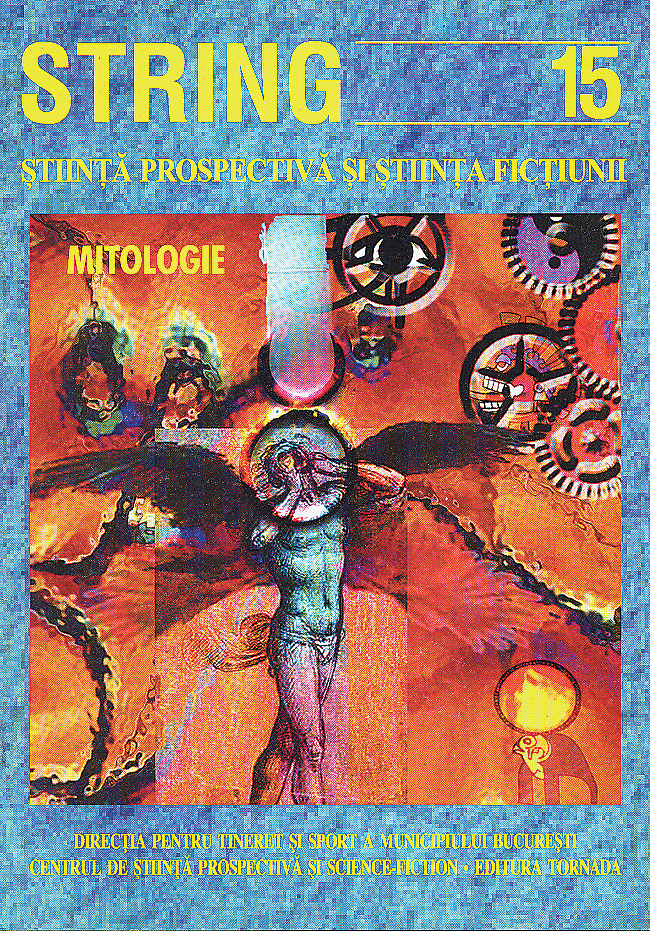
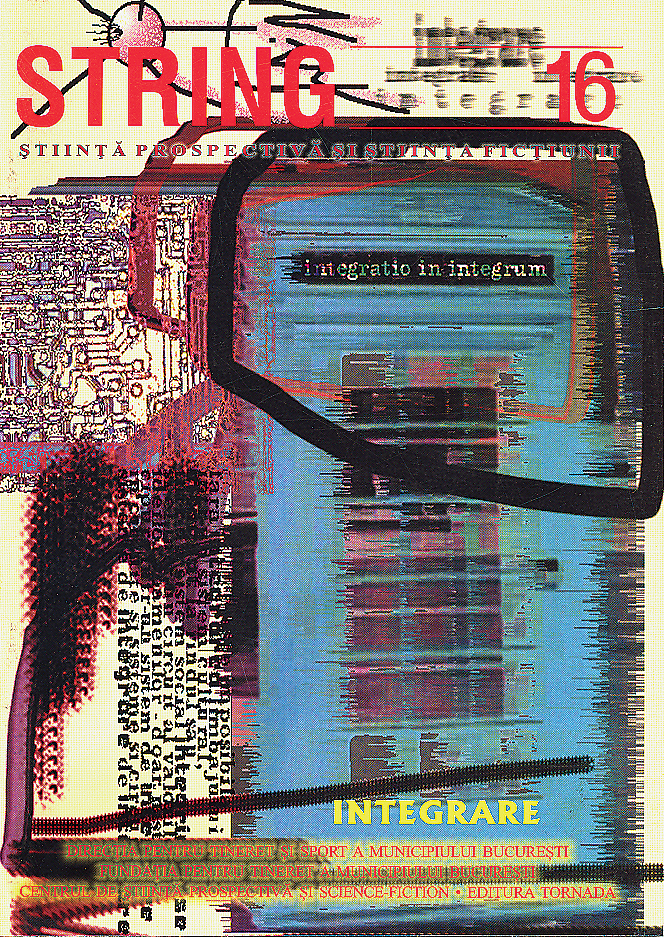
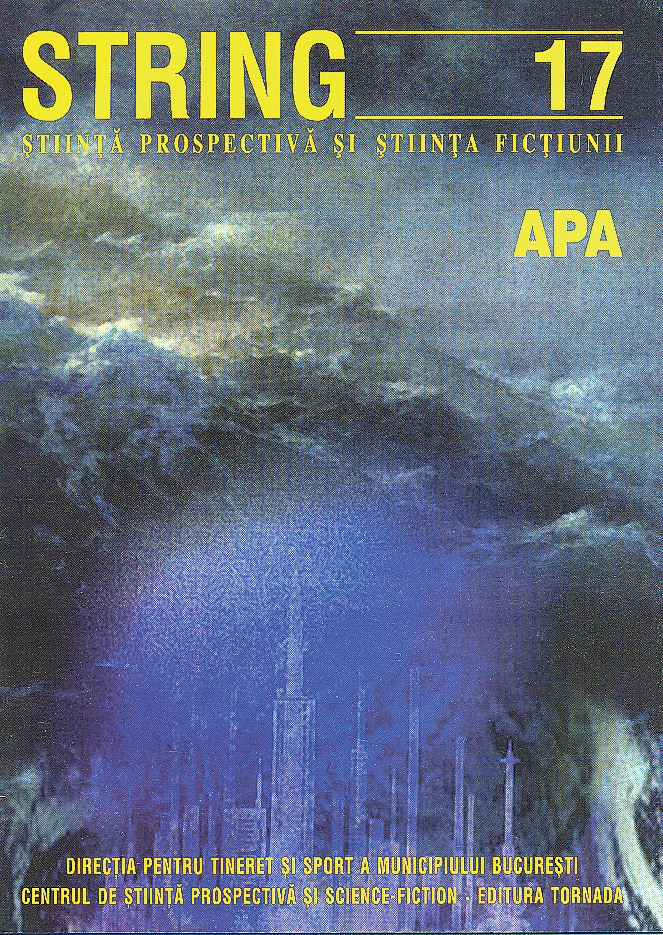
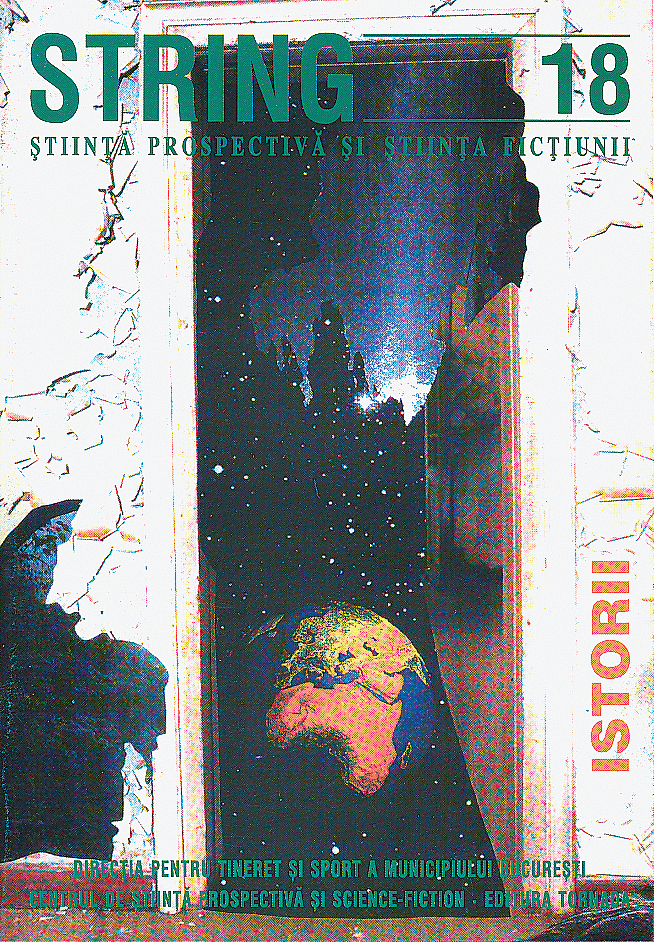
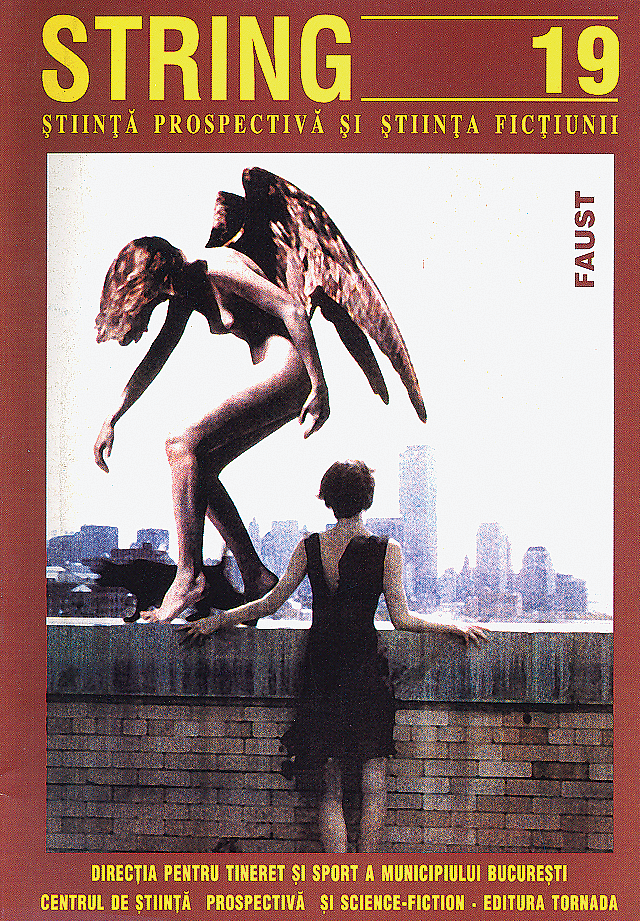
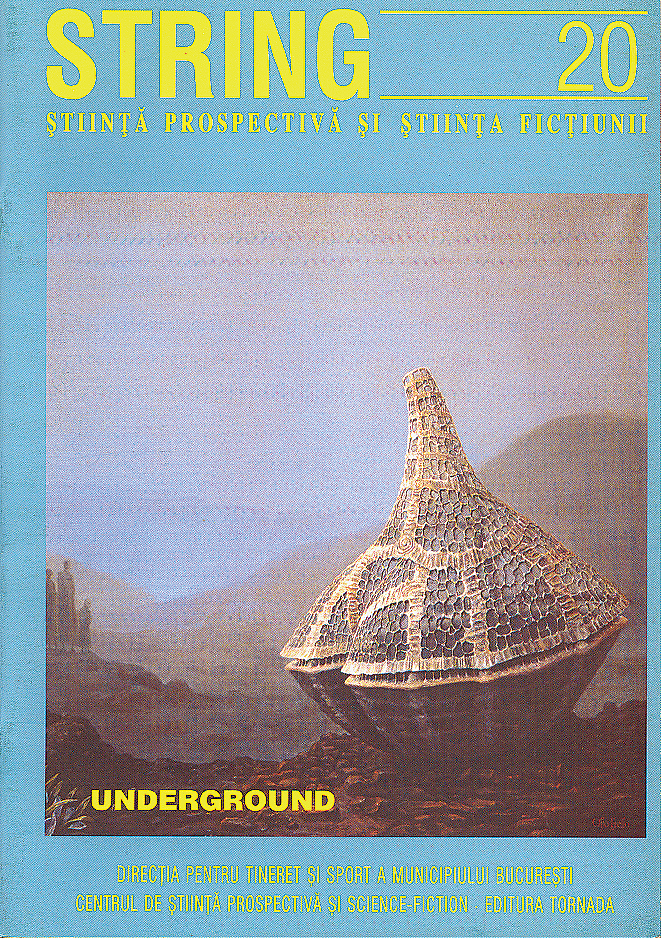


 Română
Română Deutsch
Deutsch English
English Español
Español Esperanto
Esperanto Français
Français Italiano
Italiano Latīna
Latīna Português
Português 中文(简体)
中文(简体) 日本語
日本語 한국어
한국어